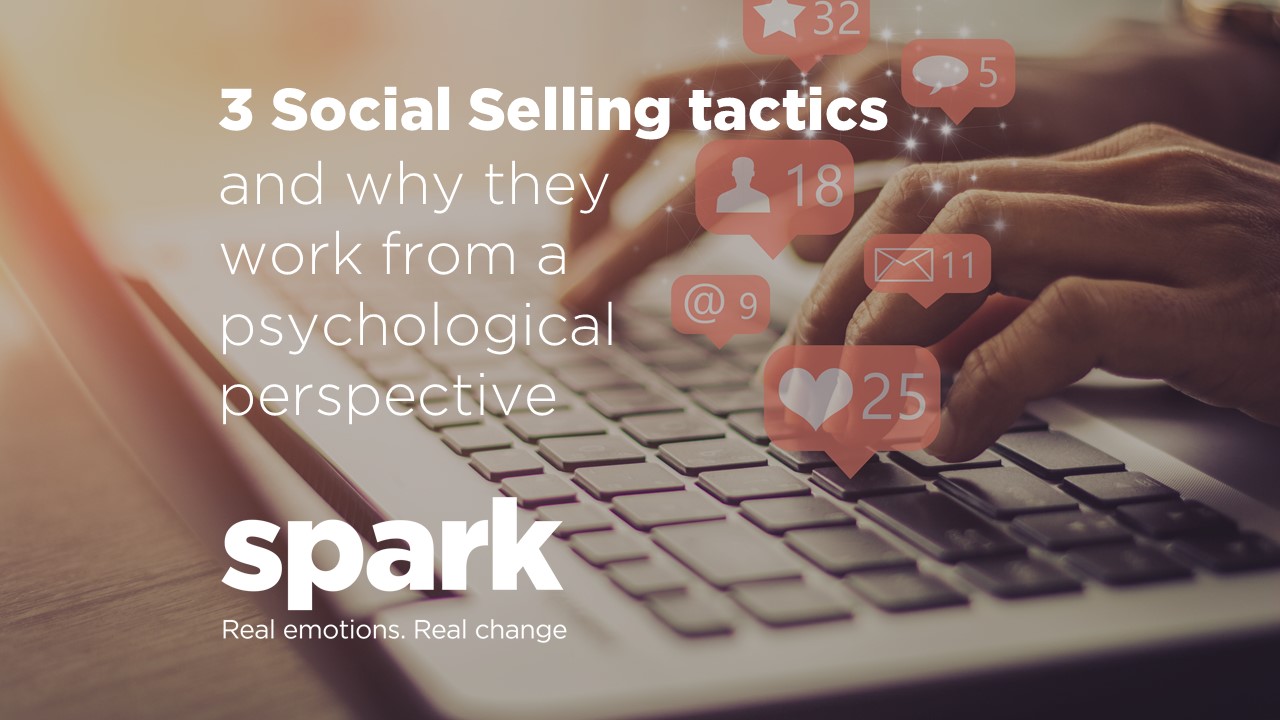At Spark Emotions, we strive to understand the reasons behind why people behave as they do. In this article, we will bring you 3 social selling tactics and why they work from a psychological perspective.
If you’ve ever watched at least one episode of Mad Men (whether out of curiosity, pleasure or pure mock-ability) you might’ve noticed that almost every character tries to leverage their relationship with a client in order to win their business.
Albeit traditional, it is a great example of social selling; or, to describe it simply, the use of information, technology and relationships to identify new customers, connect with and provide value to them by engaging in conversations earlier, and build strong relationships that, in turn, lead to better sales performance.
It is a long-term subtle strategy, one so useful that 78% of sales people engaging in Social Selling outperform their peers who aren’t using it. Social selling has grown to become an important and omnipresent phenomenon being used by everyone from the biggest influences and brands (think Kim Kardashian, Adidas, Emily Skye) to micro-influencers and home-grown labels; but how did this happen?

Well, due to advances in science and technology, we are now more connected than ever! 78% of UK internet users are on Facebook, 77% of social media users in the UK are actively engaging every month, with the average user spending approximately two hours a day on just social media, and 81% of them are 34 years old and under.
The integration of technology into our lives has helped drive Social Selling
Due to this integration of technology, media and life our connectivity to everything and everyone around has increased, leading to more reliance on the Internet for information, entertainment and socialization (especially in COVID-19 times), as well as contentment with using the internet – this can be seen even in the 55+ age group whose online grocery shopping has increased in the UK from 8% in 2019 to 23% in 2020.
Ease of use and availability of information have also impacted B2B and B2C environments as more and more consumers are starting the buying process earlier online. Looking for information, honing in on an agreeable service that meets their need and engaging in a comprehensive review of the service’s merits are all behaviours relatively new to the buying process and they come from experienced, well informed consumers. This evolvement of behaviour has led to the need for service providers to become much more aware not only of the steps involved in choosing and purchasing a service, where to target information for maximum impact and how to tailor content to an ever-evolving market, but also of the human factors, for example:

1 – Reviews, recommendations and word-of-mouth (are gold nuggets)
In a study covering more than 2/3 of the global advertising spend, 93% of consumers trust their friends and family and 90% trust review sites when it comes to brand information.
There are a number of reasons why this continues to be the case, such as similarity of likes and dislikes between us and our friends/family, we believe they know us better than anyone else, etc, yet the most important one is that we trust them to give us un-biased, honest opinions of their experiences.
This is also applicable to review sites, as the probability of random individuals having vested interests in a particular product tends to be minimal.
+ Encourage reviews, referrals, recommendations, etc.
2 – Create a community
Humans are social creatures that thrive off being part of a group, physically as well as mentally and emotionally. By creating and encouraging a sense of community and belonging to your brand, members can start identifying with the brand community and in time can become loyal customers, being a source not only of repeat purchases but of actionable insights, new customer conversion and strategic support too.
+ Turn strangers into friends.
3 – Foot in the door
Rooted in cognitive dissonance, this theory states that in order to convince someone to do something relatively big or important for you, you should first start with a small ask of the individual. It works relatively well as we tend to believe if we’ve already completed a small task for someone, we must’ve done for a reason and to go against the grain now would be dissonant, a feeling we don’t particularly care for.
+ Ask them for a small favour to start the conversation.
As encouraged by COVID-19, technology and convenience, the movement online is now bigger than ever, making Social Selling an important tool for the present and future market.
We can help you drive more sales by getting to the truth of who your customers are, how they feel and behave and what make them decide to buy or not. If you would like to know more, fill in our contact form below.
Enter your details to find out how we can help you optimise online

Written by Amelia Gavrila, Senior Research Executive at Spark Emotions.
If you have any questions, feel free to reach out to Amelia via email amelia.gavrila@sparkemotions.com or connect with her on LinkedIn





